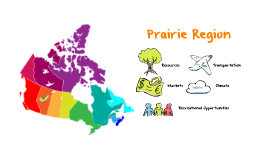Sales Pitch Presentation
Transcript: Other recreational activities and places in the region includes: Winter Festival, Ice fishing, Pow Wow, Canoeing, Hiking, Musuems, and National Parks. When travelling by sea, sea carries charger per container rates shipping. They charge tends to be based more on the size of a shipment. However, sea carries could turn out to be more expensive. For speed, many sea shipments can take around a month to arrive but ships are getting faster. They have created shorter shipping routes. Ocean lines tends to have a weekly schedules so missing a weekly cut-off means a longer delay. For environmental impact, considering oil spills, and the water ecosystems affected by ship can cause a huge problem. Saskatchewan: On January 1, 2016, Saskatchewan's population reached 1,142,750, up to 13,509 from January, 2015. Prairie Region When transporting by train, trains are capable of transporting a large amount of containers that come from shipping ports. Trains can arrive at their destination pretty fast but the main disadvantage of rail is its lack of flexibility. Trains have a certain time schedule. It is hard to go around it. However, the government are currently trying to encourage shippers to use train more often because of its environmental benefits. Rail transportation is more economic and energy efficient. The northern region of the Prairies is a boreal forest which is mostly to cold for agriculture. It is more for the resources like mining. When carrying a cargo by road, companies strives for the best routes and prices to ship out their products. It may cost more because of rate, time, gas, weight, and size. For speed, driving does take a long time to arrive so this is more recommended if you are shipping within the region. Ground shipment is reliable however, due to weather it does cause delay but not much, maybe a day or two. For environmental impact, road shipment causes many issues. when travelling by air, airlines charge a company by what is called a chargable weight. Chargable weight is calculated from a combination of weight and size. When it comes to speed, there is no question that air usually much faster but its the most unreliable. For environmental impact CO2 emissions are much higher in airlines causes carbon fingerprints. The Prairie also consist of agriculture. - wheat, barley, canola, brassica, and oats. The Natural resources: - Oil, gas, potash, salt, uranium, and diamond. Manitoba: On January 1, 2016, Manitoba's population reached 1,308,800. Climate The Canadian prairie generally experience dry semi-arid climates. Population: When deciding how you are going to bring supplies from another country to the Prairies, you have 4 choices of transportation. Mixed Grass Prairie - The dry interior plains. Alberta: On January 1, 2016, Alberta's population reached 4.23 million, up 72,400 from January 1, 2015. Fescue Prairie - The moisture region. Resources There are 726, 420 immigrants here in the Prairie region. Mostly in Alberta and Manitoba and a decent amount in Saskatchewan. (Based on a 2006 resource) The Prairies have more younger population compared to the rest of Canada, with more children up to 14 years old than adults 65 or older. Tallgrass Praire - More of the flatland and cropland. - Really good for resources. The Prairies is quiet diverse due to different parts in the area. There are 3 main types of grassland in the Praires. The southeastern prairies are semi arid and highly prone to frequent and severe drought. The zones around major cities are very dry. The eastern section of the prairies is well watered with several large lakes and rivers. The area also gets reasonable amounts of precipitation. The middle sections of the prairies have better farmland, despite having shorter frost-free season. The northern region is a boreal forest. Recreational Opportunities Markets Transportation Immigrants:

















